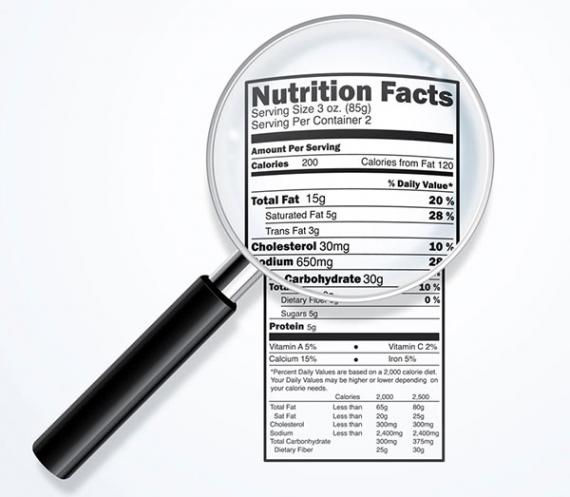Reading Food Labels
- lifeinbalancerd

- May 20, 2021
- 3 min read
We all know how frustrating it can be to not know what the best approach is to weight loss. You may feel pulled in many different directions by friends, trainers, doctors and especially vitamin, supplement and food companies.
Our world is overflowing with advertising. So much so, that a recent article estimated that the average person is exposed to 5,000 - 10,000 advertisements in a single day. Ours brains don't necessarily recognize every one of these, but that is a truly shocking number. One of the most common places to encounter advertisements? Food products!
Weight Loss Tip #18 - Read Food Labels

When you go to pick up a product at the grocery store, what's the first thing that draws you to it?
Is it the color of the package?
The style or sleakness of the container?
The claims that the product makes?
The placement on the shelf?
All of these factors are designed purposefully by the seller with one primary goal - to get you to buy the product!
We must look further than the front of the package to determine if this food is going to help us reach our goals or pull us further away from them.

1. Never trust the front of the box
- Although sometimes these claims may be true to an extent, they are hardly ever telling the full story.
- The product may claim to be low fat, but has 20 grams of sugar or claims to be low calorie, but loaded with sodium. Avoid purchasing foods based solely on one number or ingredient without looking at the full picture.
2. Always read the nutrition facts
- Get in the habit of turning over every box you pick up and read the nutrition facts for yourself before making a determination whether or not to purchase and consume.
- Just because a product says "no high fructose corn syrup" on the front doesn't mean there isn't a different type of sugar that can pack just as many calories and may not be beneficial for your health.
3. Check the Ingredients
You may read a label claiming "made with real fruit" and then turn it over to find out its 5% real fruit and 95% artifical flavors.
Remember when reading ingredients:
- Typically, the less ingredients listed the more natural the product is
- Ingredients are listed in decending order by weight. If bleached flour or sugar is the first ingredient, consider looking for a healthier option. The lower down you find these products on the ingredient list, if at all, the better.
4. Pay attention to serving size
When reading a food label, be sure to start at the very top. The first thing to know on a food label is the serving size and servings per container.
Maybe a small bag of chips advertises that it only contains 150 calories until you glance up and read that there are 3 servings in this individual size bag. Be prepared to eat a much smaller portion or do the math (150 x 3 = 450 calories) if you plan to consume the whole bag.

My challenge to you this week is to increase your awareness of what is on food labels of items in your pantry or your grocery cart. Open your pantry and read the claims and the advertisements on the front of the boxes and then turn them over a do a little bit of research. I think you'll be shocked at what you find!
Interested in more tips on the food label? I'm considering doing a Part 2 since this is such an important and tricky topic! Comment on this blog or email me and let me know if you'd be interested in knowing more or if there are any other additional topics you'd like to see me cover!
I'm here for you and I believe in you! See you next week.





Comments